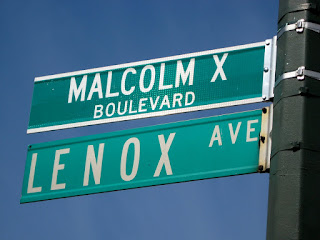
UC researchers recently received a federal grant to fund heart failure and heart disease studies. Back row, from left: Jeffery Molkentin, Jeffrey Robbins, Dr. Stephen Liggett. Front row, from left: Dr. Gerald Dorn, Litsa Kranias.
Media Credit: University of Cincinnati Medical Center Public Relations | About 40 percent of African-Americans have a genetic variant that can protect them after heart failure and prolong their lives, according to research conducted at Washington University School of Medicine in St. Louis and collaborating institutions.
The genetic variant has an effect that resembles that of beta blockers, drugs widely prescribed for heart failure. The new study offers a reason why beta blockers don't appear to benefit some African-Americans.
"For several years a controversy has existed in the cardiovascular field because of conflicting reports about whether beta blockers helped African-American patients," |
says senior author Gerald W. Dorn II, M.D., professor of medicine, associate chairman for translational research and director of the Center for Pharmacogenomics at Washington University.
"By mimicking the effect of beta blockers, the genetic variant makes it appear as if beta blockers aren't effective in these patients," he explains. "But although beta blockers have no additional benefit in heart failure patients with the variant, they are equally effective in Caucasian and African-American patients without the variant."
Co-author Stephen B. Liggett, M.D., professor of medicine and physiology at the University of Maryland School of Medicine and director of its cardiopulmonary genomics program says the discovery adds to the accumulating evidence that genetic differences contribute to the way people respond to medications and should encourage the use of genetic testing in clinical trials to identify people who can benefit from therapy tailored to their genetic makeup.
About 5 million people in the United States have heart failure, and it results in about 300,000 deaths each year. Beta blockers slow heart rate and lower blood pressure to decrease the heart's workload and prevent lethal cardiac arrhythmias.
While Caucasians with heart failure participating in clinical studies of beta blockers have shown clear benefit from the drugs, the evidence for benefit in African-Americans has been ambiguous. The current study, reported online April 20, 2008, in Nature Medicine, identified one particular race-specific gene variant that seems to account mechanistically and biologically for these indeterminate results.
The gene codes for an enzyme called GRK5, which depresses the response to adrenaline and similar hormonal substances that increase how hard the heart works. Adrenaline is a hormone released from the adrenal glands that prompts the "fight-or-flight" response — it increases cardiac output to give a sudden burst of energy.
In heart failure, decreased blood flow from the struggling heart ramps up the body's secretion of adrenaline to compensate for a lower blood flow. Overproduction of the hormone makes the weakened heart pump harder, but eventually worsens heart failure.
Beta blockers alleviate this problem by blocking adrenaline at its receptor in the heart and blood vessels. GRK enzymes mimic this effect by serving as "speed governors" that work like the governor in an engine to prevent adrenaline from over-revving the heart, says Dorn.
The researchers — including three equally contributing co-authors: Liggett, Sharon Cresci, M.D., assistant professor of medicine in the Cardiovascular Division at Washington University and a cardiologist at Barnes-Jewish Hospital, and Reagan J. Kelly, Ph.D., at the University of Michigan — found that 41 percent of African-Americans have a variant GRK5 gene that more effectively suppresses the action of adrenaline than the more common version of the gene. People with the variant gene could be said to have a natural beta blocker, Dorn says. The variant is extremely rare in Caucasians, accounting for its predominant effects in African-Americans.
The researchers showed that African-American heart failure patients with this genetic variant have about the same survival rate even if they don't take beta blockers as Caucasian and African-American heart failure patients who do take beta blockers.
"That doesn't mean African-Americans with heart failure need to be tested for the genetic variant to decide whether to take beta blockers," Dorn says. "Under the supervision of a cardiologist, beta blockers have very low risk but huge benefits, and I am comfortable prescribing them to any heart failure patients who do not have a specific contraindication to the drug."
"This is a step toward individualized therapy," Cresci says. "Medical research is working to identify many genetic variants that someday can ensure that patients receive the medications that are most appropriate for them. Right now, we know one variant that influences beta blocker efficacy, and we are continuing our research into this and other relevant genetic variants."
The human heart has two forms of GRK: GRK2 and GRK5. The researchers meticulously searched the DNA sequence of these genes in 96 people of European-American, African-American or Chinese descent to look for differences. They found most people, no matter their race, had exactly the same DNA sequence in GRK2 or GRK5. But there was one common variation in the DNA sequence, a variation called GRK5-Leu41, the variant that more than 40 percent of African-Americans have.
To determine the effect of the GRK5-Leu41 variant, the team studied the course of progression of heart failure in 375 African-American patients. They looked for survival time or time to heart transplant, comparing people with the variant to those without. Some of these patients were taking beta blockers and some were not.
In patients who did not take beta blockers, the researchers found that those with the variant lived almost twice as long as those with the more common version of the GRK5 gene. Beta blockers prolonged life to the same degree as the protective GRK5 variant, but did not further increase the already improved survival of those with the variant.
"These results offer an explanation for the confusion that has occurred in this area since clinical trials of beta blockers began," Dorn says. "Our study demonstrates a mechanism that should lay to rest the question about whether beta blockers are effective in African-Americans — they absolutely are in those who don't have this genetic variant."
Other institutions collaborating in the study are the University of Cincinnati, Thomas Jefferson University and the University of Missouri, Kansas City.
Liggett SB, Cresci S, Kelly RJ, Syed FM, Matkovich SJ, Hahn HS, Diwan A, Martini JS, Sparks L, Parekh RR Spertus JA, Koch WJ, Kardia SLR, Dorn II GW. A GRK5 polymorphism that inhibits beta-adrenergic receptor signaling is protective in heart failure. Nature Medicine April 20, 2008 (advance online publishing).
Funding from National Heart, Lung, and Blood Institute supported this research.
Washington University School of Medicine's 2,100 employed and volunteer faculty physicians also are the medical staff of Barnes-Jewish and St. Louis Children's hospitals. The School of Medicine is one of the leading medical research, teaching and patient care institutions in the nation, currently ranked third in the nation by U.S. News & World Report. Through its affiliations with Barnes-Jewish and St. Louis Children's hospitals, the School of Medicine is linked to BJC HealthCare.
Media Assistance:
Gwen Ericson Assistant Director of Research Communications
ericsong@wustl.edu (314) 286-0141 WEB:
Washington University School of Medicine in St. Louis
































